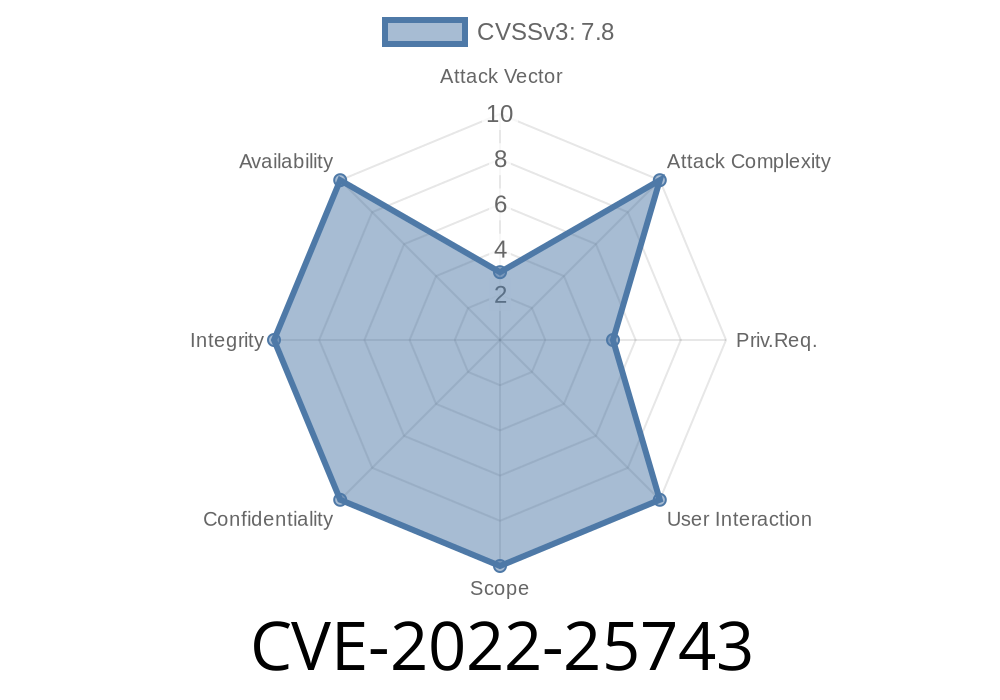A critical vulnerability (CVE-2022-25743) has been discovered in Qualcomm's Snapdragon products that directly affects numerous platforms including Snapdragon Auto, Snapdragon Compute, Snapdragon Connectivity, Snapdragon Consumer IOT, Snapdragon Industrial IOT, Snapdragon Mobile, Snapdragon Voice & Music, and Snapdragon Wearables. The vulnerability is caused by a use-after-free issue during graphics buffer importation, which can result in memory corruption and further exploitation. In this long-read post, we will delve into the details of this vulnerability, provide code snippets for better understanding, and discuss potential exploit scenarios.
Vulnerability Details
The affected component suffers from a use-after-free when importing graphics buffers. A use-after-free vulnerability occurs when the memory is freed but still referenced in the application, potentially leading to unexpected behavior, crashes, or even arbitrary code execution by an attacker.
In this particular case, the vulnerability happens during the importation of a graphics buffer. The graphics buffer is a data structure that holds various information about the graphics and images to be rendered to the screen. When this buffer is imported, it is possible that an attacker could trigger the use of a deallocated memory space which could lead to unintended consequences such as memory corruption.
Below is a simplified code snippet illustrating the issue
1. GraphicBuffer *buffer = new GraphicBuffer(...);
2. // Import the GraphicBuffer, which might fail
3. if (importGraphicBuffer(buffer) != NO_ERROR) {
4. delete buffer;
5. return nullptr;
6. }
7. // Use the GraphicBuffer without checking if it was deleted in step 4
8. buffer->lock(...);
9. // ...
10. buffer->unlock();
11. delete buffer;
As seen above, if the importGraphicBuffer() function call on line 3 fails, the buffer object is deallocated in line 4. However, the buffer object is used later on lines 8 and 10 without checking if it was deleted in step 4. If the buffer was deleted, it is potentially possible for an attacker to control data used in lines 8 and 10.
Attackers can exploit this vulnerability in various ways, such as
1. Crash the system or application: A simple exploit could cause the vulnerable application to crash repeatedly, resulting in a denial of service.
2. Gain unauthorized access: A more sophisticated exploit may allow an attacker to modify the content of the vulnerable memory segment and potentially escalate their privileges on the affected device.
3. Execute arbitrary code: In the worst-case scenario, a skilled attacker could potentially manipulate the use-after-free vulnerability to execute arbitrary code, leading to a complete system compromise.
Patch and Mitigations
Qualcomm was made aware of the vulnerability and has since issued a patch to address this issue. The relevant security bulletin can be found here.
Users and vendors of the affected Snapdragon components are strongly encouraged to update their firmware with the provided patch and follow best practices regarding application security.
Conclusion
CVE-2022-25743 is a critical vulnerability affecting a wide variety of Snapdragon platforms. By exploiting this vulnerability, attackers can potentially cause memory corruption, gain unauthorized access to the device, and even execute arbitrary code. Fortunately, Qualcomm has issued a patch to fix this issue. Therefore, it is of utmost importance that users and vendors update their devices and review their application security practices to reduce the risk of exploitation.
Timeline
Published on: 11/15/2022 10:15:00 UTC
Last modified on: 11/18/2022 05:01:00 UTC
